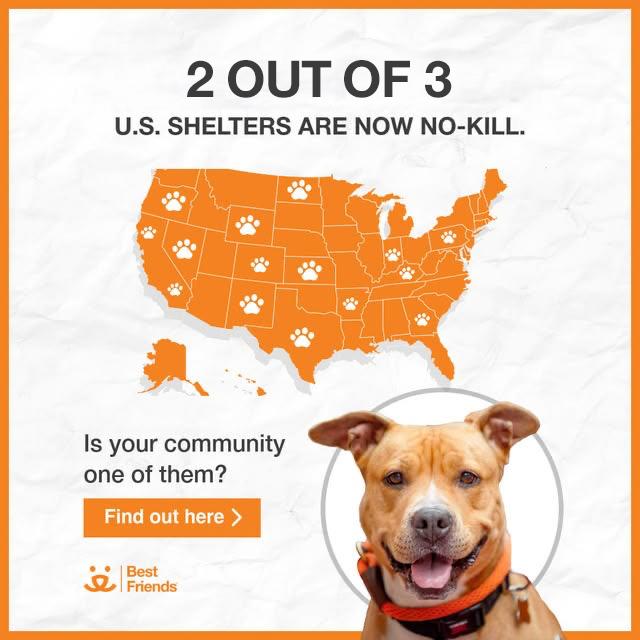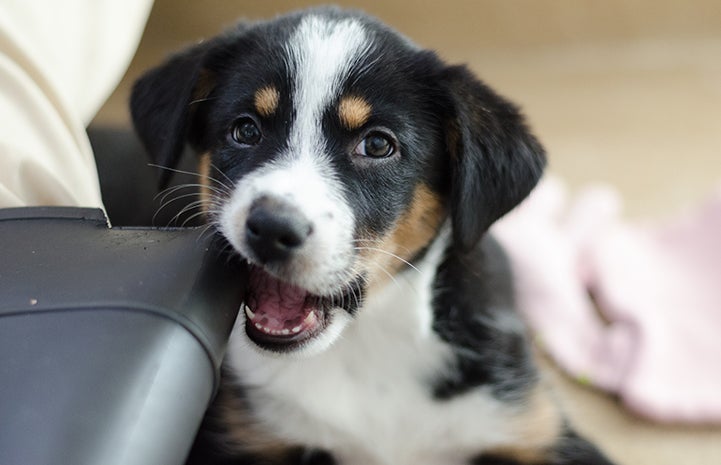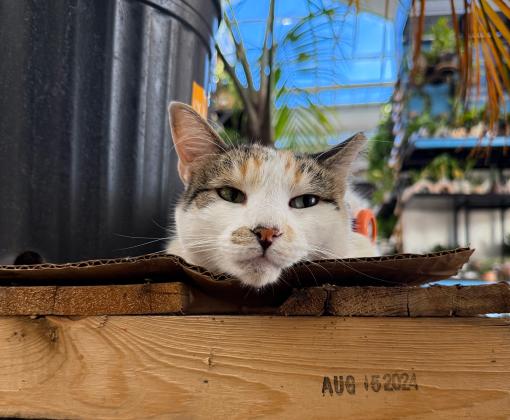
What to Expect With a New Puppy
You’re thinking about taking the plunge and adopting a wriggly bundle of joy, otherwise known as a new puppy. Here are a few things to expect with a new puppy before you bring your dog home.
New puppy responsibilities
Adopting a puppy is a huge commitment. For one thing, you can’t leave a puppy home alone all day. Most young puppies need to get outside every two hours to eliminate. If the puppy you adopt hasn’t been house-trained, you'll have to work on that skill with them.
Learn how to house-train a dog
You’ll also want to consider how caring for a puppy will fit into your lifestyle. Puppies are generally pretty rambunctious and require a lot of attention, playtime, and exercise. If you’re exhausted at the end of your workday and just want to take a relaxing walk, you might want to think about adopting a more mature dog. On the other hand, a puppy could be perfect for you if you work from home, have an active lifestyle, and/or have other people in your home who will help provide care.
Socializing puppies
Puppies need to be socialized to the wide world, so they won’t be afraid of new situations, objects, sounds, people, and other animals. Dogs should be thoroughly socialized when they are puppies (especially between 3 to 20 weeks old) because it’s critical to their lifelong well-being and their ability to be comfortable in the world.
To have a happy, well-adjusted dog, you’ll need to have the time and patience to socialize your pup in a positive way. What sort of things does a puppy need to be introduced to? Here’s a partial list:

See how your community is doing
- Different types of people, including male and female, young and old, tall and short, loud and quiet
- People wearing hats, glasses or sunglasses, helmets, coats or capes with hoods up, gloves, and masks
- Household items and sounds, such as the sound and movement of the vacuum cleaner and other electrical appliances
- Handling and grooming, including touching of all the puppy’s body parts
- Car rides
- Walks in the neighborhood or to the park once the puppy is fully vaccinated
- Other animals, especially dogs but also any other domesticated pet the puppy might encounter later in life
Basic puppy training
To enhance your dog’s social skills, you’ll need to commit to basic training — teaching your puppy to walk nicely on leash, take treats gently, play with dog toys (not your hands), refrain from jumping up on people, and respond to basic cues (such as “sit,” “down,” “come,” and “stay”).
Time and patience will be required. Being conscientious about socializing and training your puppy will result in a dog who is happier, more relaxed, and welcome in more places. For both training and socialization, we strongly recommend taking all puppies to a socialization class with a relationship-based behavior consultant.
How to find a good dog trainer
Before adopting a puppy, make sure the other human members of your household are enthusiastic about the decision and understand the commitment involved. If everyone is not on board, make sure you will be able to provide the puppy’s care and socialization by yourself — and also that the other humans in the house will respect the work you are doing with your puppy.
One of the keys to successful training is consistency, so everyone in the house must work with the puppy in the same way. If you have young children, you’ll need to monitor them when they’re interacting with the puppy to ensure the safety of both them and the dog — and to prevent them from teaching the puppy bad habits.

Other pets and your new puppy
Finally, consider how a puppy will affect your other pets, as they are part of the family, too. If you have an older cat who doesn’t like dogs, for example, having an inquisitive puppy around might be stressful for your kitty. By contrast, a puppy might put a spring in the step of a dog who’s been pining for a canine companion.
If your other pets seem stressed by having a puppy in the house, make sure you are giving your puppy plenty of mental and physical stimulation to tire them out. Plus, make sure your other pets get plenty of time with you without the puppy around, so they can relax.
Books on raising a puppy
For more information about raising a puppy, we recommend the books Before You Get Your Puppy and After You Get Your Puppy by Ian Dunbar and The Puppy Primer by Patricia McConnell and Brenda Scidmore.
